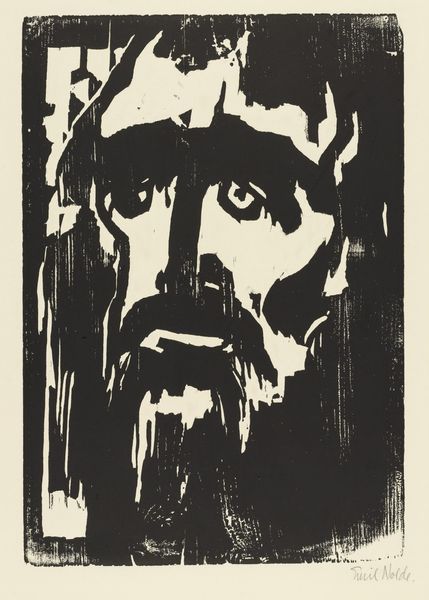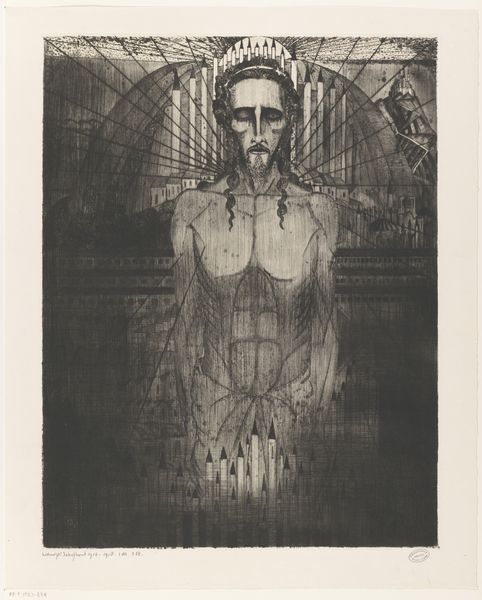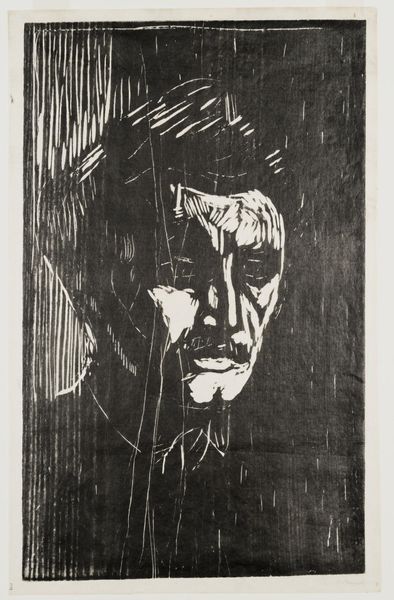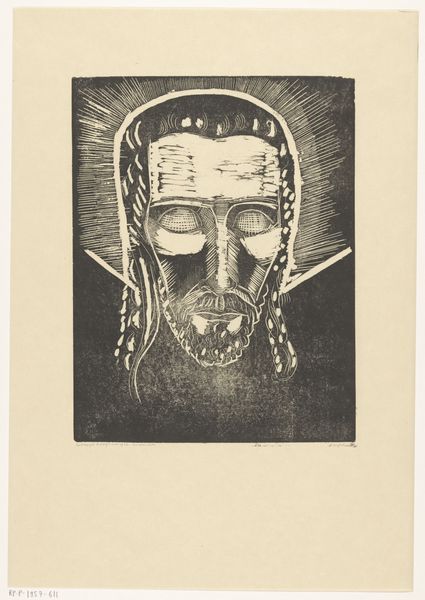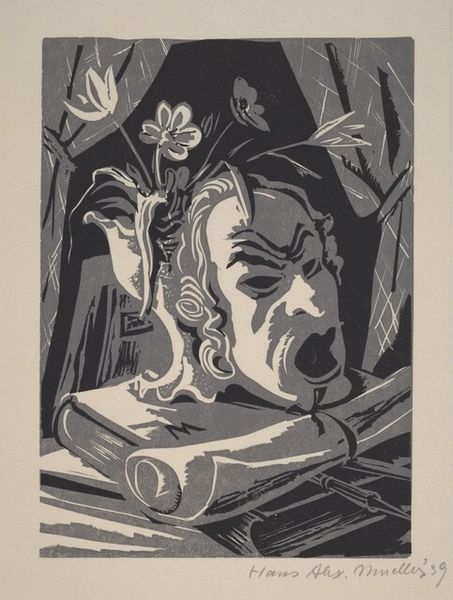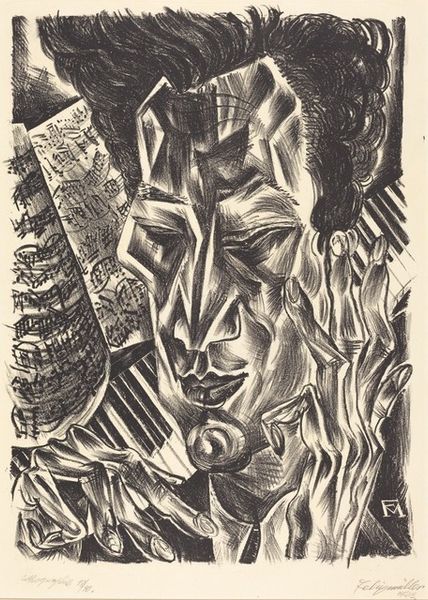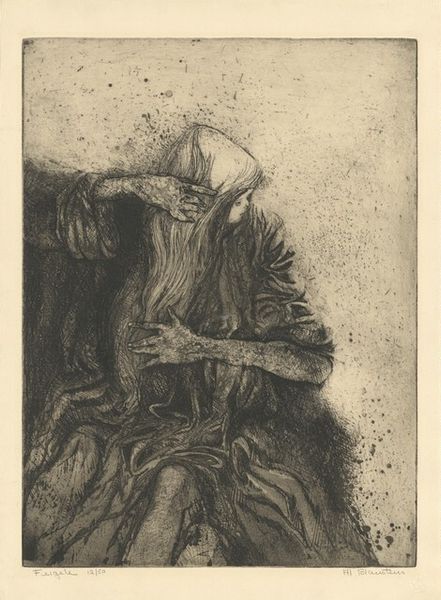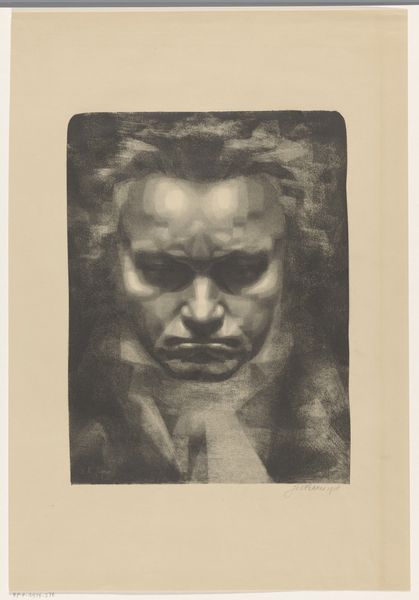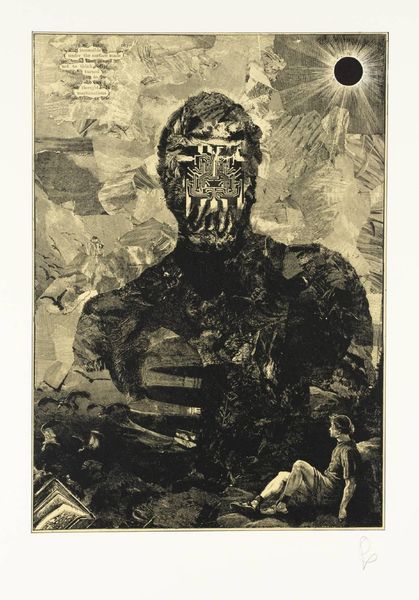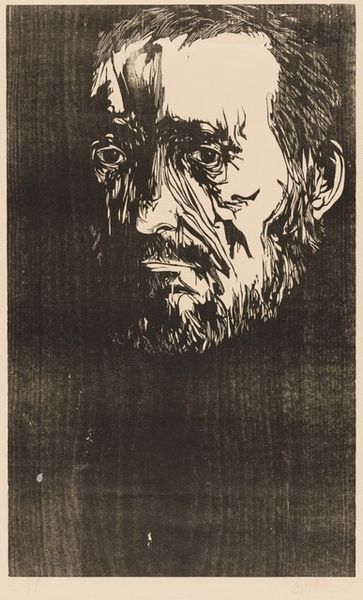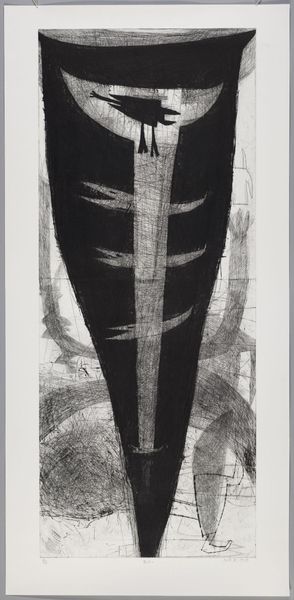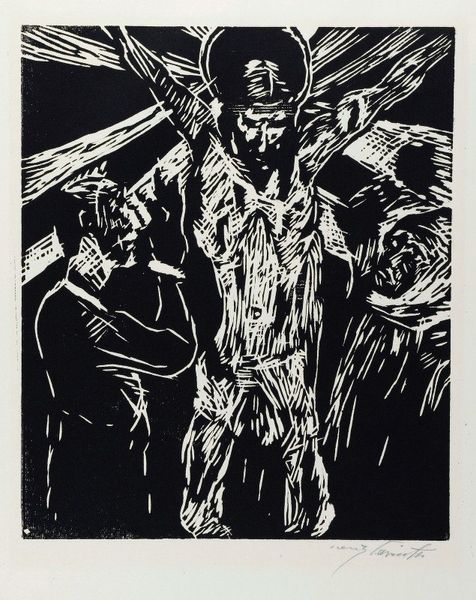
print, charcoal
#
portrait
# print
#
caricature
#
charcoal art
#
expressionism
#
charcoal
Dimensions: plate: 64.4 x 49.9 cm (25 3/8 x 19 5/8 in.) sheet: 69.5 x 52.6 cm (27 3/8 x 20 11/16 in.)
Copyright: National Gallery of Art: CC0 1.0
Editor: Wow, what an intense piece. I immediately get this sense of profound sorrow and also maybe, surprisingly, of serenity from this charcoal drawing. Curator: That's a fascinating reaction! This is "Tête de Christ", Head of Christ, by the Dutch artist Lodewijk Schelfhout, created in 1913. It's a striking example of expressionist printmaking in charcoal, showcasing a moment laden with religious, political, and perhaps even personal significance for Schelfhout at that time. Editor: You can really feel that personal weight. There’s a rawness to the charcoal lines that conveys an almost unbearable emotional intensity. And did he do it in charcoal? Such fragile medium, really matching to the frailty of a deity! Curator: Exactly. Schelfhout's choice of charcoal emphasizes the stark contrast between light and shadow, and we should analyze this considering the rise of secularization in the early 20th century. The stylized, almost mask-like rendering of Christ's face and the imposing crown of thorns suggests not only suffering but also a profound interrogation of power. Editor: The crown almost blends with the thorns of the church spires behind him. Is he implicating religious institutions here, maybe questioning established orders? The artist is doing an interesting psychological exploration, I find it hard to remain detached. Curator: That interpretation holds significant weight. We can't overlook how expressionist art, in general, often mirrored anxieties related to modernity and questioned established societal norms. Schelfhout created this around the beginning of World War I and his feelings on powerlessness likely added even greater dimensions of meaning here. Editor: Well, now I can’t help but think of that old phrase, "art imitating life." This piece certainly makes you think. So glad it stirred so many emotions, there is not much that affects me, to this extent. Curator: Indeed, that it makes the viewer reflect on timeless struggles of faith and justice certainly confirms its significance and artistic merit. It encourages us to engage with not only religious symbolism, but also with deeper cultural anxieties that persist.
Comments
No comments
Be the first to comment and join the conversation on the ultimate creative platform.

